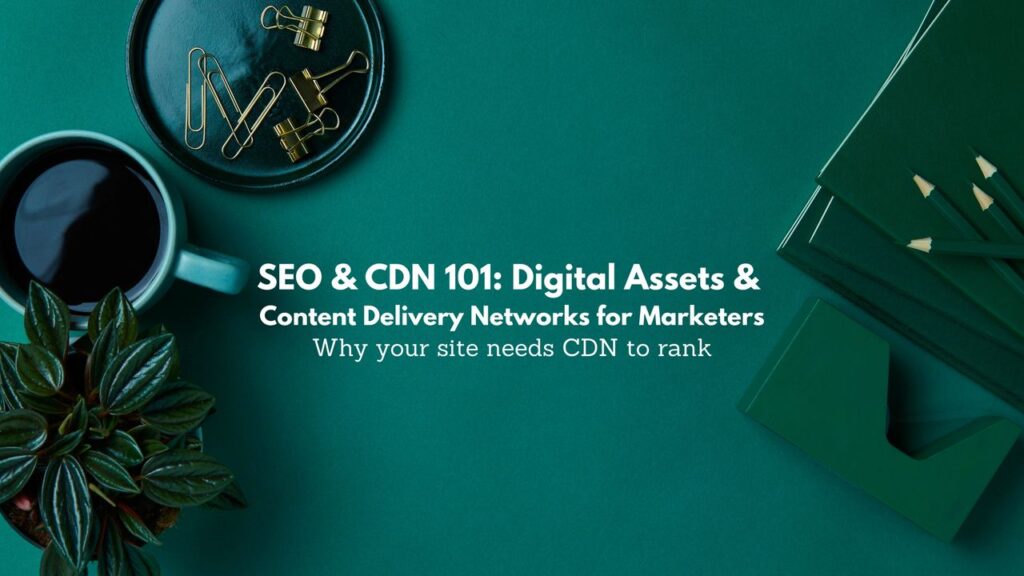Content Delivery Networks (CDNs) are essential in the world of SEO. They can significantly impact your site’s load time, directly linked to SEO success. CDN also improves user experience and website speed by making it more reliable at different locations nationwide or even internationally for international clients! This type of technology stores web content from a variety of places all over so that when people visit, they’ll have an easier access point because these servers will be quicker than if you only had one server located somewhere out west, like where most companies do their hosting– oops I just spilled some tea on my keyboard…
A Content Delivery Network has multiple benefits, such as increasing page load times while improving customer satisfaction due to faster loading sites and increased stability.
CDNs are now necessary for any company looking to rank higher in Google and provide the best possible experience for customers. They’re also great at improving load time, which is tied to overall SEO success. CDNs work by storing web content on multiple servers close to end-users; this results in faster delivery times than if your site were hosted with only one server location. Optimizing sites with an already established CDN can be difficult due to many factors (such as different types of objects included), but it’s worth considering because users will thank you!
ETA (12/4/2023) Since our last update in 2021, Content Delivery Networks (CDNs) have evolved significantly, aligning with the latest SEO trends and technological advancements. In 2023, CDNs are not just about speed and reliability; they now incorporate AI-driven content optimization, advanced security features, and edge computing to provide an even more seamless user experience. These enhancements are crucial in meeting the ever-increasing expectations of users and search engine algorithms.
What is a CDN?
A CDN is an innovative solution to the age-old problem of website lag. A CDN takes your content and distributes it across a global network of servers, which reduces server load time because the information from one server will be sent rather than many, that could cause more problems with speed. Due to this design, media can be delivered much faster resulting in better ranking for sites if they have used a CDN as part their online presence strategy.
Technological Advancements in CDN
As of 2023, CDNs have integrated cutting-edge technologies like AI and machine learning for intelligent content caching and distribution, ensuring that your website’s content is not just quickly but also smartly delivered to your users. Edge computing has also come to the forefront, bringing data processing closer to the end-user and drastically reducing latency. These advancements contribute to a more robust and efficient network, capable of handling complex web applications and large-scale content distribution with ease.
Why is a CDN important for SEO?
A CDN is essential to a website’s SEO standing as it can significantly impact your site’s load time, which in turn affects how likely the page will rank. A CDN stores copies of content on servers across different geographic locations and when someone requests that information from your site they are more likely to get access to one of those servers without any delay at all.
Nowadays every business needs an online presence because so many people search for things online instead of going into brick-and-mortar shops or calling customer service numbers. The problem with this reliance being so heavy is that if something goes wrong, then there could be negative consequences not just offline but also onto other areas like lower ranking pages due to slow loading times shown by Google.
SEO Advancements and Google Algorithm Changes
In the ever-evolving landscape of SEO, Google’s algorithm updates in 2022 and 2023 have further emphasized the importance of site speed and user experience. CDNs play a pivotal role in this, as they directly impact Core Web Vitals, a set of metrics Google uses to measure user experience. Fast-loading pages, enhanced interactivity, and visual stability, all facilitated by an efficient CDN, are now more crucial than ever for ranking higher in search results.
Render-Blocking = Road Blocking
A CDN is a great way to increase your website’s efficiency, but you need to beware of one big potential roadblock. Render-blocking resources are kind of like the traffic jams that wait for no man and will cause delays in loading times even with an efficient network connection speed. Luckily there are some easy fixes including separating out CSS from JS files into their own scripts on separate pages or downloading them asynchronously when they’re needed later instead of blocking the load time by waiting until all processing has been completed before continuing rendering the page content .
How to fix render-blocking JavaScript:
- Inline your JavaScript if it’s too small
- Load your scripts asynchronously by using the HTML async attribute
- Defer your JavaScript
- Move JavaScript to the footer (not always the best solution)
How to fix render-blocking CSS:
- Properly call your CSS files.
- Use media queries to mark some CSS resources as not render-blocking
- Lessen the number of CSS files (concatenate your CSS files into one file, noting that this becomes less important with HTTP/2)
- Minify your CSS (remove extra spaces, characters, comments, etc.)
- Use less CSS overall.
Keep in mind HTTPS is also a ranking factor. You can serve your assets over HTTPS with a CDN while not running your main website over it – but you cannot do this the other way around as you’ll run into mixed-content warnings. A web server and a CDN each require their SSL certificate, which is an entirely separate process that requires its own work to set up two certificates on both sides of the equation.
Enhanced Security Features
With the rise in cyber threats, the security aspect of CDNs has gained significant attention. Modern CDNs now come equipped with enhanced security features like DDoS protection, SSL/TLS encryption, and secure token authentication. These features not only protect your content but also ensure the safety and privacy of your end-users, which is increasingly becoming a priority for search engines and users alike.
How to choose the right CDN for your business
Choosing the right CDN for your website is important, and it can be difficult to make a decision if you don’t know what you’re looking for. A good rule of thumb would be: think about what type of content that site has before making any decisions. If it’s primarily static content like images or HTML pages – then full-site acceleration may work best… Some CDNs focus on large file delivery while others specialize in dynamic site acceleration based off where they are located (sometimes nearby). You’ll want to choose one that works well with regions along with how much traffic there is at the time.
Here are the questions you’ll want to ask yourself before picking a CDN:
1. What type of content will you deliver?
2. Where in the world are your most important users?
3. Do you want a reliable “legacy” CDN or an innovative one?
4. Will they be easy to work with?
5. Do they support personalized content delivery?
6. Will they help with implementation?
How can you use a CDN to rank higher for organic traffic?
You may not be a web developer, but you know that speed is critical to success. You want Google features like “Accelerated Mobile Pages” and the ability to rank higher in search engine results for organic traffic? Make your site faster by optimizing images, increasing reliability and availability of servers so as they don’t crash or go down at an inconvenient time when someone might need it most. How will your CDN help with this process? Glad you asked! It’s all about reducing latency times which can happen because of network congestion on connections between data centers around the world; thus making sure content gets from point A (servers) to B (your website) quickly enough without any delay whatsoever using their global server grid infrastructure setup.
A content delivery network, or CDN for short, is a global distributed system of servers that are placed in several data centers. The goal of the CDN is to offer highly reliable and fast streamings by having copies near end-users which will connect those together with high speed links. One advantage over hosting arrangements such as this would be there’s no need for extra storage space since everything stays on hand at all times!
A functional CDN is especially important when you design a cutting edge website, load times can dip drastically when embedding movement and high-definition graphics or video. Cutting-edge web design concepts require high quality delivery.
Consideration for HTTP/3
In light of recent advancements, it’s also important to consider the role of HTTP/3 in CDN performance. HTTP/3 offers improved speed and reliability over its predecessor, particularly in networks with packet loss. As of 2023, ensuring your CDN supports HTTP/3 can provide a competitive edge in SEO and user experience.
The basics of setting up your own CDN
If you are looking for ways to take your SEO game up another notch, setting up your own CDN could be just what you need. To set up your own CDN, there are three key components that you will need. These include traffic sources, content delivery servers, and security. After all the mergers, acquisitions and shut downs, the only CDN I would trust with my content is CacheFly
As the CDN market continues to evolve, new players have entered, and existing ones have upgraded their services. When choosing a CDN in 2023, it’s important to evaluate their support for the latest technologies, including HTTP/3, AI-based content distribution, and edge computing capabilities. The right choice will depend on your specific needs, such as the type of content you deliver, your target audience’s geographical location, and the desired level of security and customization

